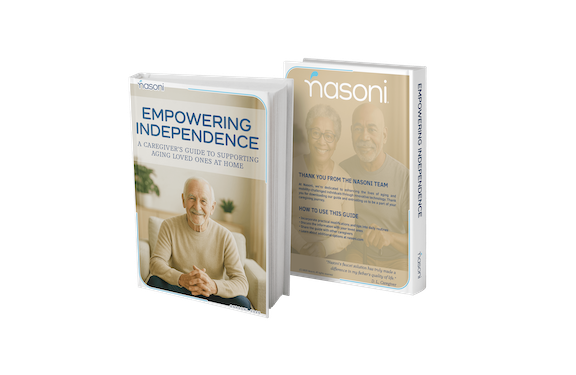FOUNTAIN FAUCETS: AN ASSISTIVE DEVICE

What are assistive devices?
An assistive device is an external device that is designed, manufactured, or adapted to assist a person to perform a particular task. The majority of individuals with disabilities depend upon such assistive devices that enable them to carry out activities of daily living independently. Examples of assistive technology includes anything from hearing aids, to smart walking canes and even virtual reality solutions that support learning.

These also serve as a measure of inclusion for such individuals to participate actively and productively in community life. It is also being increasingly recognized that many of these assistive devices are also of significant benefit for the elderly, as they demonstrate health promotion and prevention strategies.
According to the Convention on the Rights of Persons with Disabilities, the United Nation, urges its members to promote the research and development of such universally designed goods, services, and equipment, that facilitates and aids individuals with disabilities.
One such assistive device in the discussion today is the Nasoni Fountain Faucet, that aims to bring comfort and convenience to not only its healthy consumers but especially those with disabilities and the elderly.
Nasoni Fountain Faucet
Nasoni Fountain Faucet is an eco-friendly sink fixture that comes with the promise to enhance the standard of health. More than a simple faucet, this lead-free brass faucet is equipped with the dynamic fountain technology that jets the water upward for easy, strain free drinking.

The addition of the NSF 42/53 certified Nasoni water filter further amplifies the nutritional benefits of water by detoxifying it of hazardous impurities, color and taste, making it safe for consumption. Its practical design also ensures the conservation of water by cutting down water losses up to 88% in comparison to a traditional bathroom faucet.
Why Switch to a Nasoni Fountain Faucet?
Nasoni fountain faucet is not only an aesthetic addition to a home but an innovative product that was manufactured to add convenience to a household. Of particular interest is its user-friendly construct and design that was engineered to improve the quality of life, especially in a household where the elderly or persons with disabilities reside. Encouraging the independence of performing the activities of daily life in all, the Nasoni Fountain faucet is a thoughtfully designed hardware that addresses the two essential aspects of a person’s daily routine i.e. hydration and hygiene. Both these factors have a vital impact on the general well-being of an individual and can be better understood with the following discussion.
Hydration

Water is one of the six essential nutrients required by the body to function properly. The significance of drinking adequate amounts of water daily for the maintenance of health is being increasingly recognized. Studies in the healthy adult population demonstrate that even mild dehydration can impair several important aspects of cognitive function, such as alertness, concentration, and short-term memory. The severity of these symptoms only increases with increasing age and gives rise to serious health concerns in the elderly.
Strong evidence also shows that good hydration reduces the risk of urolithiasis (kidney stones), urinary tract infections, hypertension, fatal coronary heart disease, venous thromboembolism, and cerebral infarcts. Dehydration is also a proven risk factor for delirium and delirium presenting as dementia, in the elderly and sick. Recent literature also demonstrates dehydration to be one of several predisposing factors for the confusion observed in long-term-care residents. In the elderly low fluid intake is also associated with increased levels of acute constipation, with twice the frequency of constipation episodes observed in chronically dehydrated individuals than those adequately hydrated.
Water deprivation and dehydration are also linked with the development of headache, as it is known to impair concentration and increase irritability. Both of these can serve as a trigger for migraines and can also prolong the migraine episode. Studies show that patients with water deprivation-induced headache, observe relief within 30 minutes to 3 hours with ingestion of adequate amounts of water. The physiology behind water deprivation-induced headache is proposed to be the result of intracranial dehydration and a decrease in total plasma volume.
Therefore, drinking adequate amounts of water daily is crucial for the body to function at its optimal level. Roughly, 11 to 16 cups of water per day are recommended for average built height females and males, respectively.
Hygiene
Nasoni fountain faucet is primarily marketed to address the concerns regarding oral, facial, and hand hygiene. Hand hygiene is widely known to be the most effective measure for interrupting the transmission of microorganisms, in other words, infection. In the current pandemic times, the importance of hand hygiene in the control of infection cannot be underemphasized. The primary aim of handwashing is to decrease the colonization of transient microorganisms that can potentially cause infectious diseases. For instance, an estimated 2–3 million deaths worldwide occur each year from infectious diarrheal diseases, many of which can be prevented by simple vigilant hand hygiene. WHO also reports, that handwashing with soap and water could save a million lives a year.
Similarly, the significance of oral hygiene cannot also be downplayed. Regular brushing, flossing, and gargling exhibit substantial protection from oral infections and other dental complaints. Multiple pieces of research confirm oral hygiene to be the most important predictor for the development of periodontitis (serious gum infection) in all age groups. More than 14,000 dentate samples were analyzed in a study and it was recorded that more than 95% of those examined with good oral hygiene did not have periodontitis. In conclusion, maintaining good oral hygiene eliminates the risk of wide dental and oral pathologies. 
How Nasoni Fountain Faucet Works as an Assistive Device:
Below are some examples of how the Nasoni fountain faucet can act as an assistive device to improve the quality of life for people with disability challenges.
- The most targeted population for this product is the elderly, as it resolves both their major concerns about adequate hydration and postural problems. With increasing, age maintenance of personal hygiene becomes equally significant and burdensome, due to the high prevalence of age-related medical complications in this population. These may include, joint aches secondary to osteoarthritis, increased thirst secondary to diabetes, changes in blood pressure on bending with heart failure, and forgetfulness secondary to age-associated dementia, etc. All such conditions contribute to the gradual loss of independent functioning and the increase in need of assistance to perform the activities of daily life. Nasoni fountain faucet can address the two major essential concerns of hydration and hygiene by playing its role as an assistive device. It can not only significantly reduce the complaints observed while bending over the sink for hygiene care but also works as an effective tool to facilitate easy access to drinking water for the elderly.
- Patients with scoliosis (abnormal curvature of the spine) suffer from constant back pain that exacerbates with the change in posture. The incidence of scoliosis in persons over fifty years of age is estimated to be over 6 percent, which increases in magnitude up to six times (36%) with the presence of osteoporosis in this population. Nasoni faucets can improve the quality of life in such individuals by eliminating the extreme discomfort they encounter while bending forward to perform personal hygiene or to drink water from the tap.
- Patients with progressive illnesses such as Parkinson’s disease gradually lose the independence of performing their self-care over time. As the disability in coordinated movements progress, their dependence on a care provider increases. An assistive device such as the Nasoni fountain faucet can be of great convenience for such patients in the early stage of the disease as it overcomes the need for coordinated movements to perform hygiene practices or hold onto a glass of water for drinking.
- Patients with upper limb amputations or fractures are at a disadvantage while performing activities that require coordinated bilateral hand movement and strength. These may include washing the face, rinsing after brushing teeth, or holding a glass of water. The Nasoni fountain faucet can assist them to perform the above-mentioned activities with one hand.
- Similarly, patients with stroke, especially those with unilateral loss of motor function are always in need of assistance to help them carry out their hygiene activities. This may include helping them with bathing, washing hands, and face, etc. Nasoni fountain faucet can, thus, provide assistance to such individuals.
- Patients suffering from medical conditions that compromise the immune system such as diabetes, cancers, on immunosuppressant medication, etc. are always at high risk of contracting water-borne illnesses. Consumption of safe and clean water in such individuals is of utmost importance. Thus, replacing traditional tap water drinking with Nasoni Fountain Faucet with an added water filter can protect such population from contracting serious infectious diseases.
- Nasoni fountain faucet not only brings convenience to the life of the elderly or disabled but also can lighten the burden on care providers. Promoting independent hygiene and hydration practices, it shares the responsibilities of care providers and helps cut down on the time and cost of individual care.

REFERENCES:
- Khasnabis C, Motsch KH, Achu K, Al Jubah K, Brodtkorb S, Chervin P, Coleridge P, Davies M, Deepak S, Eklindh K, Goerdt A. Health promotion. InCommunity-Based Rehabilitation: CBR Guidelines 2010. World Health Organization.
- Convention on the Rights of Persons with Disabilities. New York: United Nations; 2006. [30 March 2010]. www.un.org/disabilities/
- Vanderpool DW, James JI, WYNNE-DAVIES RU. Scoliosis in the elderly. JBJS. 1969 Apr 1;51(3):446-55.
- Lawlor PG. Delirium and dehydration: some fluid for thought?. Supportive care in cancer. 2002 Sep 1;10(6):445-54.
- Voyer P, Richard S, Doucet L, Carmichael PH. Predisposing factors associated with delirium among demented long-term care residents. Clinical Nursing Research. 2009 May;18(2):153-71.
- Culp KR, Wakefield B, Dyck MJ, Cacchione PZ, DeCrane S, Decker S. Bioelectrical impedance analysis and other hydration parameters as risk factors for delirium in rural nursing home residents. The Journals of Gerontology Series A: Biological Sciences and Medical Sciences. 2004 Aug 1;59(8): M813-7.
- Robson KM, Kiely DK, Lembo T. Development of constipation in nursing home residents. Diseases of the colon & rectum. 2000 Jul 1;43(7):940-3.
- Lindeman RD, Romero LJ, Liang HC, Baumgartner RN, Koehler KM, Garry PJ. Do elderly persons need to be encouraged to drink more fluids?. The Journals of Gerontology Series A: Biological Sciences and Medical Sciences. 2000 Jul 1;55(7): M361-5.
- Shirreffs SM, Merson SJ, Fraser SM, Archer DT. The effects of fluid restriction on hydration status and subjective feelings in man. British Journal of Nutrition. 2004 Jun;91(6):951-8.
- Blau JN. Water deprivation: a new migraine precipitant. Headache: The Journal of Head and Face Pain. 2005 Jun;45(6):757-9.
- Blau JN, Kell CA, Sperling JM. Water‐deprivation headache: A new headache with two variants. Headache: The Journal of Head and Face Pain. 2004 Jan;44(1):79-83.
- Popkin BM, D'Anci KE, Rosenberg IH. Water, hydration, and health. Nutrition reviews. 2010 Aug 1;68(8):439-58.
- Ritz P, Berrut G. The importance of good hydration for day-to-day health. Nutrition reviews. 2005 Jun 1;63(suppl_1):S6-13.
- Trampuz A, Widmer AF. Hand hygiene: a frequently missed lifesaving opportunity during patient care. mayo clinic proceedings 2004 Jan 1 (Vol. 79, No. 1, pp. 109-116). Elsevier.
- Pittet D, Hugonnet S, Harbarth S, Mourouga P, Sauvan V, Touveneau S, Perneger TV. Effectiveness of a hospital-wide programme to improve compliance with hand hygiene. The Lancet. 2000 Oct 14;356(9238):1307-12.
- Teare EL, Cookson B. Handwashing: a modest measure whit big effects. BMJ. 1999;680:86
- Curtis V, Cairncross S. Effect of washing hands with soap on diarrhea risk in the community: a systematic review. The Lancet infectious diseases. 2003 May 1;3(5):275-81.
- World Health Organization. The world health report 2000: health systems: improving performance. World Health Organization; 2000.
- Jumaa PA. Hand hygiene: simple and complex. International Journal of Infectious Diseases. 2005 Jan 1;9(1):3-14.
- Hugonnet S, Pittet D. Hand hygiene—beliefs or science?. Clinical microbiology and infection. 2000 Jul 1;6(7):348-54.
- Oosterom J. The importance of hygiene in modern society. International Biodeterioration & Biodegradation. 1998 Jan 1;41(3-4):185-9.
- Abdellatif HM, Burt BA. An epidemiological investigation into the relative importance of age and oral hygiene status as determinants of periodontitis. Journal of dental research. 1987 Jan;66(1):13-8.




Leave a comment